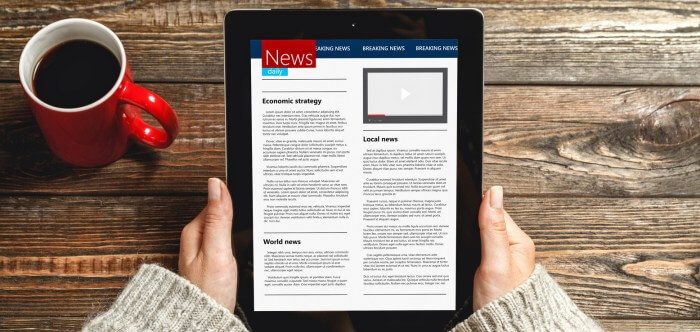Embarking on the journey of academic publishing, researchers often find themselves at a crossroads, deciding the best avenue to disseminate their work. A common dilemma they face is understanding the intricacies of publishing their conference papers in academic journals. This brings us to a pivotal question: “Can the conference paper published in a journal?”
Yes, you can. However, if your conference paper was fully published in the proceedings, republishing it in a journal might not be feasible. However, if only the abstract was included in the conference proceedings, your chances are significantly brighter.
In this blog, we will unravel these nuances, providing a clear pathway for academics who wish to extend the reach of their conference papers. Stay with us as we delve deeper into the guidelines and best practices for transitioning conference papers to journal articles.
Definition of a Conference Paper and a Journal
In the academic world, two key types of publications stand out: conference papers and journals, each serving a unique purpose. Conference papers are concise presentations of recent research findings, typically shared at international educational conferences. They provide a platform for immediate feedback and networking with peers.
Journals, on the other hand, are periodical publications that focus on specific academic fields. They contain peer-reviewed articles that have undergone rigorous evaluation by experts in the field. This process ensures the validity and significance of the research presented.
While conference papers offer a snapshot of ongoing research, journals provide a more comprehensive and vetted account. The depth and thoroughness of journal articles make them valuable resources for in-depth academic study and reference.
What Makes the Conference Paper Different From a Journal?
Conference papers and journal articles, while both crucial in academic research, differ significantly in several aspects:
Purpose and Audience
Conference papers are typically presented at conferences to share preliminary or ongoing research findings with peers in the field. They are designed for immediate feedback and discussion, catering to a specific audience attending the conference.
Journals, however, are intended for a broader academic audience. They provide detailed and thoroughly vetted research findings, contributing to the body of knowledge in a particular field.
Review Process
The review process for conference papers is generally quicker and less rigorous than for journal articles. Conference papers are often reviewed by a committee for relevance and quality before acceptance, but this process is usually less comprehensive than the peer review system employed by academic journals.
Journal articles undergo a stringent peer review process, where experts in the field evaluate the research for its originality, methodology, and contribution to the discipline, often leading to revisions before publication.
Detail and Depth
Conference papers are typically shorter and less detailed than journal articles. They are meant to be presented within a limited time frame, focusing on key findings and conclusions.
Journal articles, in contrast, provide a more comprehensive analysis, including detailed methodology, extensive literature review, in-depth discussion, and conclusions. They offer a complete view of the research undertaken, making them a more permanent and citable record of scholarly work.
In summary, while conference papers are an essential medium for presenting and discussing new research ideas and findings, journal articles serve as a more detailed, rigorous, and permanent record of academic research.
Can the Conference Paper Published in a Journal?
Yes, a conference paper can be published in a journal, though this is subject to certain conditions and considerations. It’s important to understand the nuances involved in this transition.
Prior Publication Status
If the full conference paper was already published in proceedings, republishing in a journal may not be possible. Journals typically seek original, unpublished material. However, if only an abstract or a brief summary was published, the full paper can be considered for journal publication.
Substantial Enhancement
For journal publication, the conference paper must be significantly expanded or enhanced. This involves adding more depth to the research, including detailed methodology, comprehensive analysis, and extended discussions. The enhancement should reflect a notable advancement from the initial conference presentation.
Journal Compatibility
The paper must align with the journal’s scope and audience. Each journal has specific thematic and stylistic requirements that the paper must meet. Authors should carefully select a journal that matches their research topic and adheres to its submission guidelines.
In summary, while it is possible for conference papers to be published in journals, this process requires careful consideration of the paper’s originality, the extent of its enhancement, and its compatibility with the target journal’s focus and guidelines.
How to Publish a Conference Paper in a Journal?
Transitioning a conference paper into a journal article is a strategic process that requires careful planning and adherence to specific academic standards. It begins with the assessment of the paper’s content and ends with its submission to a suitable journal. This guide outlines the essential steps to successfully publish a conference paper in a journal.
Step 1: Assess the Originality of Your Paper
Evaluate if your conference paper is original or if it has been published in full in conference proceedings. If it’s the latter, consider revising and expanding the paper substantially to ensure originality for journal submission.
Step 2: Enhance and Expand the Content
Expand your conference paper by adding more detailed research, comprehensive analysis, and a thorough literature review. Ensure the revised paper provides greater depth and insight than the original conference version.
Step 3: Choose the Right Journal
Research and identify journals that align with your paper’s topic and scope. Consider the journal’s audience, impact factor, and publication guidelines to ensure the best fit for your work.
Step 4: Adhere to Journal Guidelines
Carefully follow the chosen journal’s submission guidelines. This includes formatting, referencing style, and adhering to specific requirements like abstract length and keyword inclusion.
Step 5: Undergo Peer Review
Once submitted, your paper will undergo a peer review process. Be prepared to make revisions based on feedback from reviewers to meet the journal’s standards for publication.
Step 6: Final Submission and Publication
After addressing reviewer comments, submit the final version of your paper. Once accepted, it will be published in the journal, contributing to your field’s body of knowledge.
Publishing a conference paper in a journal is a rewarding endeavor that enhances the impact and reach of your research. By following these steps, you can effectively navigate the publication process, ensuring that your work reaches a wider academic audience.
Factors to Consider While Publishing a Conference Paper in a Journal
Publishing a conference paper in a journal is a strategic decision that requires careful consideration of various factors. These elements ensure that the transition from a conference presentation to a journal article is smooth and successful. Here are key factors to consider:
- Publication Status of the Paper: If the paper was fully published in conference proceedings, it might not be eligible for journal publication. Journals typically require original, unpublished work.
- Enhancement of Content: The paper should be substantially expanded or revised for journal publication. This might include additional research data, deeper analysis, or a broader literature review.
- Journal’s Scope and Audience: Select a journal whose scope aligns with your paper’s topic. Ensure the journal’s audience is appropriate for the content and findings of your paper.
- Adherence to Journal Guidelines: Follow the journal’s specific submission guidelines, including formatting and referencing styles. This ensures your paper meets the journal’s editorial standards.
- Quality of Peer Review: Consider the journal’s reputation and the rigor of its peer review process. A thorough review process can significantly enhance the quality of your paper.
- Open Access vs. Subscription Journals: Decide whether to publish in an open-access journal for wider accessibility or a traditional subscription-based journal. This choice impacts the paper’s reach and potential readership.
When considering publishing a conference paper in a journal, it’s crucial to assess factors like the originality of the paper, its alignment with the journal’s focus, and adherence to submission guidelines. These considerations play a vital role in ensuring the successful publication of your research in a scholarly journal.
Tips to Choose the Right Journal to Publish Your Conference Paper in
Selecting the appropriate journal for publishing your conference paper is a critical step in the academic publication process. It requires a strategic approach to ensure that your research reaches the right audience and gains the recognition it deserves. The following tips are designed to guide you in making an informed decision when choosing a journal for your conference paper.
Evaluate the Journal’s Scope
Ensure the journal’s thematic scope aligns with your paper’s subject matter. The closer the match, the higher the likelihood of your paper being accepted and well-received.
Consider the Journal’s Audience
Identify the primary audience of the journal. Your paper should cater to the interests and knowledge level of the journal’s readership for maximum impact.
Check the Journal’s Impact Factor
Review the journal’s impact factor as a measure of its prestige and the visibility it can provide to your paper. Higher-impact journals often have a wider reach but may be more competitive.
Review the Peer Review Process
Understand the journal’s peer review process. A rigorous and transparent review process is indicative of the journal’s commitment to quality and academic integrity.
Assess Open Access Options
Consider whether an open-access journal is a suitable option for your paper. Open access can increase visibility and accessibility but often involves processing fees.
Choosing the right journal for your conference paper is a multifaceted decision that depends on factors like the journal’s scope, its audience, impact factor, review process, and open access options. By carefully evaluating these aspects, you can ensure that your research finds a suitable and effective platform for dissemination in the academic community.
Last Words
The journey to answer “Can the Conference Paper Be Published in a Journal?” involves several key steps. Academics need to carefully assess their conference paper’s uniqueness, enhance it to fit the rigorous criteria of a journal, and identify a journal that resonates with their research’s theme and impact level.
The process is not just about upgrading the paper to match journal standards, but also about comprehensively understanding and following the specific submission and review protocols of the chosen journal.
Through a careful and strategic approach to these elements, researchers can effectively transform their conference papers into journal articles, significantly broadening the scope and influence of their work within the academic community.








